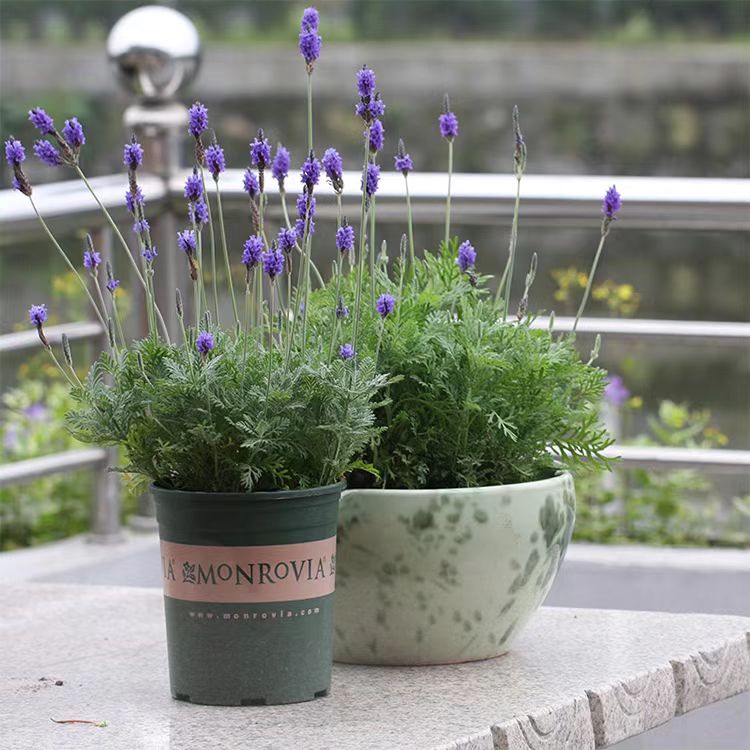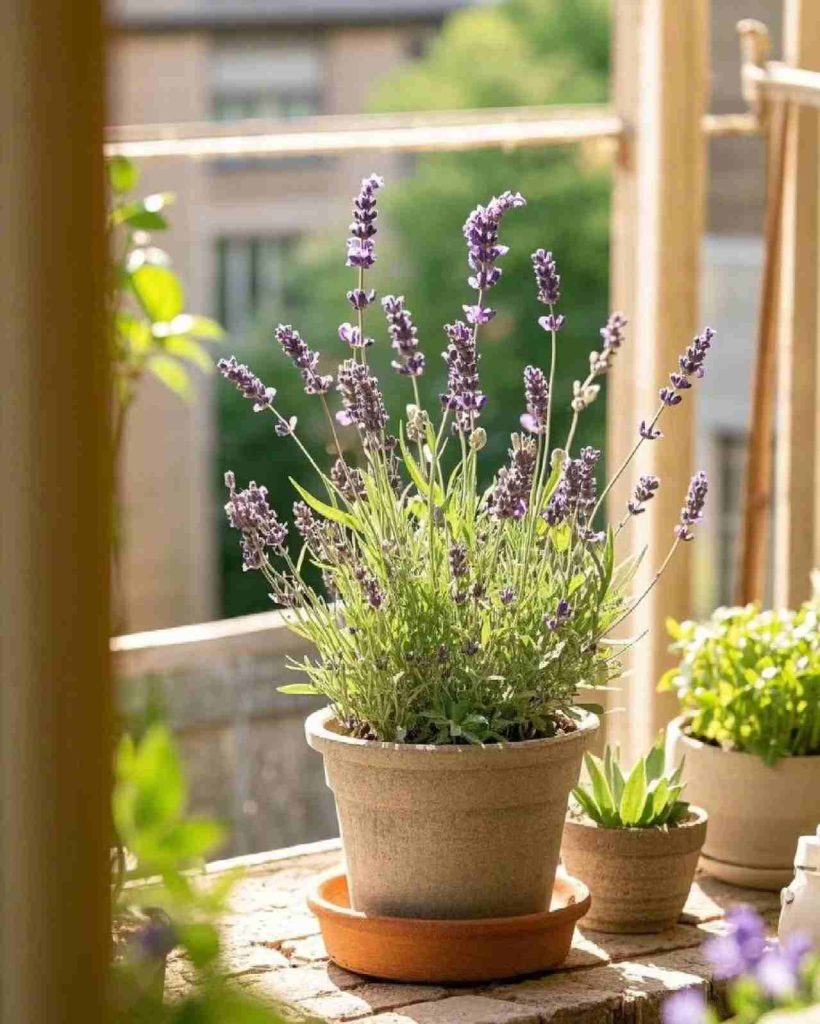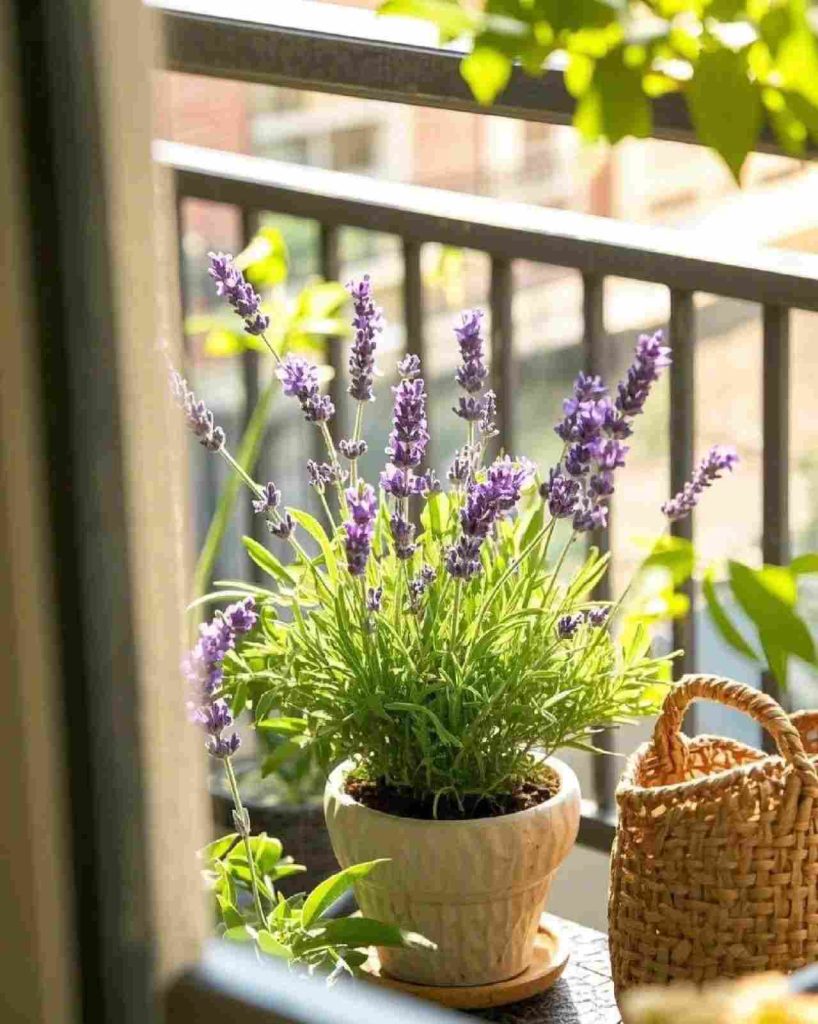How to Care for Indoor Lavender: The Ultimate Guide
How to Care for Indoor Lavender
1. Choosing the Right Pot
- Size: Select a pot with a diameter of at least 30 cm (12 inches). This size provides ample space for root development. Lavender has a shallow root system, so a deep pot is not necessary.
- Material: Terracotta pots are a popular choice because their porous nature promotes excellent drainage and air circulation.
- Drainage: Ensure the container has drainage holes at the bottom to prevent waterlogging, which can lead to root rot. Placing a layer of small stones or pebbles at the bottom of the pot can facilitate faster drainage.

2. Selecting the Right Soil
Lavender thrives in well-draining soil that mimics its native Mediterranean environment. Here are some tips for choosing or preparing the right soil mix:
- Soil Type: Use a sandy or gritty potting mix. Lavender prefers dry conditions, so avoid heavy, moisture-retentive soils.
- pH Level: Lavender grows best in slightly alkaline to neutral soil with a pH between 6.5 and 7.5.
3. Light Requirements
Lavender needs abundant sunlight to grow successfully indoors:
- Sunlight Needs: Place your lavender plant near a south or west-facing window where it can receive at least 6-8 hours of direct sunlight daily. If natural light is insufficient, consider using a grow light to supplement.
- Rotation: Rotate the pot every few weeks to ensure even growth and that all sides receive adequate light.

4. Watering Indoor Lavender
Proper watering is crucial for the health of your indoor lavender:
- Watering Frequency: Allow the top 3-5 cm (1-2 inches) of soil to dry out completely between waterings. Overwatering is one of the most common mistakes when growing lavender indoors.
- Signs to Water: If leaves begin to wilt or turn yellow, it may indicate your lavender needs water. Conversely, if the soil is consistently damp, you should reduce your watering frequency.
- Watering Technique: Water thoroughly until excess water drains from the bottom of the pot. This ensures the roots receive enough moisture without becoming waterlogged.
5. Fertilizing Indoor Lavender
While lavender does not require heavy feeding, providing some nutrients can help it thrive:
- Fertilizer Type: In early spring, use a balanced, slow-release fertilizer with low nitrogen content.
- Fertilization Frequency: Apply fertilizer sparingly and infrequently. Reduce or stop fertilizing altogether during fall and winter when the plant is dormant.

6. Pruning and Maintenance
Regular pruning helps maintain the shape and health of your indoor lavender plant:
- When to Prune: Prune lavender in early spring before new growth begins and again in late summer after the flowering period.
- Pruning Techniques: Remove any dead or damaged stems. Make your cuts just above a leaf node. The goal is to shape the plant and encourage bushier growth. Avoid cutting into the woody base, as this can hinder the growth of new shoots.

 Fiddle Leaf Fig Dropping Leaves? Yellow Leaves Fix Now! (Causes & Quick Solutions)
Fiddle Leaf Fig Dropping Leaves? Yellow Leaves Fix Now! (Causes & Quick Solutions)  Why Your Transplanted Dawn Redwoods Keep Dying: 5 Critical Mistakes (And How to Fix Them)
Why Your Transplanted Dawn Redwoods Keep Dying: 5 Critical Mistakes (And How to Fix Them)  Phalaenopsis Care: The Ultimate Guide to a Stunning, Long-Lasting Bloom
Phalaenopsis Care: The Ultimate Guide to a Stunning, Long-Lasting Bloom  Lavender Care: What to Do When Lavender Wilts After Transplanting
Lavender Care: What to Do When Lavender Wilts After Transplanting 